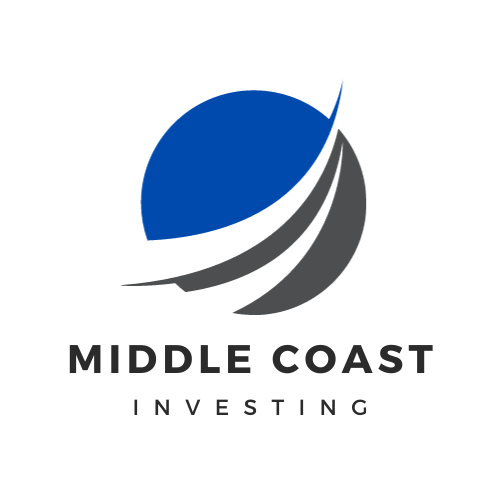
Classic Investment Strategies Geared to Your Needs
We offer investment strategies that are meant to help you reach your goals, whether you prefer a passive or an active strategy.
Investing in your future is a must, but you know that already.
Whether it’s to nourish your children’s dreams, build towards your retirement, or just ensure that your money does the most it can for you, investing can be a key that opens a door to many more possibilities.
How We Work With You
With every new Middle Coast Investing client, we’ll start with a phone call and a questionnaire to see what your investment goals, risk tolerance, and red lines are. The best investment strategies are the ones which best align to your needs and views, and we’ll ensure that our strategies suit you.
From there, you’ll decide whether you want to invest in a passive strategy or an active strategy.
Our Investing Strategies
Passive Strategy
A passive strategy entails investing in exchange traded funds (ETFs) that track major stock market indices – the S&P 500, the Nasdaq 100, and so on.
At Middle Coast Investing, we’ll present you a basic set of choices to find the index or indices that best suit your mindset and goals. We will then invest your money in the lowest-cost, most effective ETFs that track those indices.
We will rebalance your positions regularly, invest any new money you add to your account, and keep you informed of what is happening in the market through our quarterly updates, so you can get the full benefit of investing without spending any extra time. We will also get on a phone or video call with you twice a year at your opting, to make sure our strategies are still aligned with your needs, and to see how else we can help you achieve your financial goals.
And we will do this at a transparent, low-cost rate that will be competitive with or cheaper than leading robo-adviser products like Betterment, for example, for most clients*.
*Betterment charges .25% annually for accounts with over $20,000; our maximum fee is .25% annually for passive strategies, with a starting fee of .1% annually (minimum fee of $100 annually).
Active Strategy
An active strategy entails our selecting a basket of individual stocks that, based on our research, we believe will appreciate in value over time. That strategy may also include bonds, ETFs, or cash holdings to balance out the portfolio, but the focus is on stock selection.
We buy stocks based on our research and experience in the market, and will be using the same investment principles and strategies we use in our personal investing, so we are investing alongside you.
Those principles are rooted in classic value investing strategies first preached by Benjamin Graham, Warren Buffett’s key investing mentor. But they are up to date for the current market. We try to buy stocks that are on sale for less than we think they are worth, preferably in companies that are growing and have control over the financial and operational destiny. We are conservative about our own estimates and about the risks we take in individual companies, but also have no interest in following the crowd just to be able to brag or feel like we’re keeping up with the market. Trusting in our research and experience while also being open to new inputs and recognizing when we may have made a mistake or have a better opportunity open to us is the key to our approach.
Deciding which strategy is right for you
We often say there are three paths available to you once you choose to invest:
- Indexing – investing passively in the stock market
- Find someone you trust to do this for you
- Learn how to invest in stocks yourself
Each path comes with trade-offs. Indexing is the easiest path, and the one most appropriate to most investors. It’s not just us saying this: Warren Buffett, John Bogle, and many financial experts and legendary investors say this.
You can index on your own, but there are people who are still afraid or unsure of how to do that. Which is why we offer a passive investing strategy; we’ll index for you, at a low cost, so you can still achieve all the benefits of putting your money in the stock market without feeling like you have to keep up with things or learn how to manage the risks and hard times yourself.
Learning how to invest yourself is a worthwhile task, and obviously a path we have followed. It takes a lot of time, and you have to have an interest or, ideally, a passion for learning about the stock market and how it works to take that path. We’re even building a guide for people interested in learning how to invest. But that path is not for everybody.
The middle path – finding someone you trust to invest for you – gives you the chance of reaping the benefits of active investing without having to invest the time needed to do it yourself. With Middle Coast Investing, you will benefit from our experience, time, and energy spent following the markets and identifying the best opportunities.
We will also work with you to make sure we never invest in a company or industry you don’t want to associate your money with, so you will feel comfortable and confident with how your money is affecting the world.
The following table spells out the differences between the two strategies we offer:
Passive Investing
Advantages
- Low Cost – annual fee of .1-.25% of assets invested (minimum – $100/year)
- No stock selection risk – the manager does not choose individual stocks, only the tracking ETFs
- Immediate diversification (funds will own shares in hundreds of companies)
- Achieve market returns (less ETF and Middle Coast Investing fees)
- Save time and energy vs. actively managing your index portfolio
Disadvantages
- Still prone to market and valuation risk
- Possible to replicate on your own
- Will not outperform the market – you “should” underperform the market indices by ~.2-.35% a year.
Active Investing
Advantages
- Possibility of outperforming market, especially over longer time horizons
- Less market risk (since selected stocks will not be as correlated with key indices)
- Sufficient diversification (accounts will hold 8+ stocks, typically)
- Tailor our selections to your financial goals and views
- Relatively low cost – annual fee of 1% of assets invested.
- Save time while still gaining stock market exposure.
Disadvantages
- Prone to stock selection, manager risk (that we pick the wrong companies)
- More expensive than passive investing, making equivalent returns challenging
- Risk of underperforming
Interested in hearing more?
